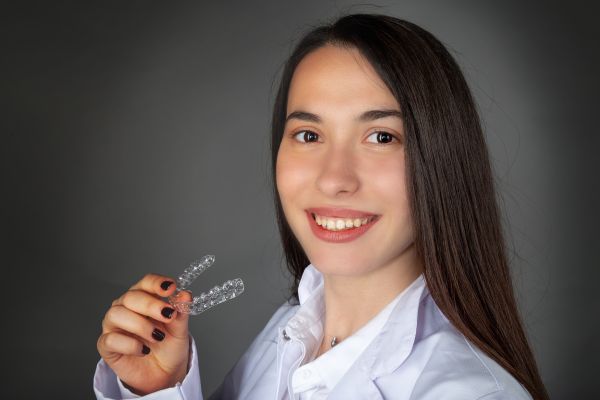Is Invisalign® Considered an Orthodontic Treatment?

If a patient’s teeth and jaw are not aligned properly, orthodontics is used to make the necessary adjustments to improve the appearance and functionality of the mouth. While many people know that fixed appliances, such as braces, are a type of orthodontic treatment, they may not realize Invisalign® is another solution that can often be used to achieve the same purpose.
The introduction of Invisalign® to orthodontics
Before 2005, bracketed braces with metal, ceramic or plastic components were the main option available to patients. While this traditional orthodontic treatment is effective at addressing a wide variety of alignment issues, metal braces are fixed onto the teeth during the entire treatment process and are clearly visible when worn. Additionally, the metal wires and brackets are prone to cause significant discomfort for patients, making it difficult to keep the teeth clean.
When Invisalign® first made its appearance in the world of orthodontics, many professionals in the field were hesitant to employ the new technology despite the FDA’s approval. This treatment uses removable clear aligners to make adjustments, making it a very appealing alternative for adults who have cosmetic concerns about the appearance of traditional braces. Many new types of technology have made this treatment more effective than ever before.
How Invisalign® is used to treat orthodontic problems
When using Invisalign®, orthodontists employ 3D imaging technology to accurately scan the patient’s teeth. This copy is then used to create a series of plastic trays that are designed to fit the person's mouth. Each week, a new set of aligners is worn to place pressure on the teeth and gradually guide them into the proper position. Patients are required to wear Invisalign® for 22 hours a day until the entire treatment process is over.
Treatable conditions
Clear aligners are limited in what conditions can be treated. For especially complicated cases, traditional braces are a more reliable treatment that can be combined with other types of orthodontics and sometimes oral surgery or dental procedures to address a variety of concerns. Invisalign® can often be used to address improper spacing or crowding, crooked teeth or an abnormal bite.
Benefits
Invisalign® allows patients to receive orthodontic treatment with minimal changes to daily life. Since the retainers can be removed, there is no reason to make any dietary changes or to avoid sports and other activities. Brushing and flossing are easy to accomplish, limiting the chance of improper cleaning. Invisalign® requires fewer checkups than traditional braces since there is no need to go in for adjustments. While clear aligners still put pressure on the teeth, resulting in some pain and discomfort, the smooth plastic exterior is less likely to cause mouth sores or irritate the cheeks. Additionally, these trays are hardly visible when worn, allowing patients to feel more confident during the treatment period.
Conclusion
While Invisalign® is not a viable option for every individual, it is frequently used in orthodontics. By offering a less noticeable, more manageable method for improving the position of the teeth and jaw, patients who might otherwise avoid orthodontic treatment are more comfortable in pursuing the care they need.
Request an appointment here: https://www.oaktreefamilydental.com or call Oak Tree Dental at (703) 763-5239 for an appointment in our McLean office.
Check out what others are saying about our services on Yelp: Read our Yelp reviews.
Recent Posts
In recent years, dental implants have become a popular treatment for patients who have missing teeth. Implants restore functionality to the mouth by making it easier to bite into foods and chew them properly. In addition, they may restore confidence in speaking and smiling. Implants may not be for everybody, though, and it is important…
Adult orthodontics has become an increasingly popular solution for individuals looking to improve their oral health and the smile's appearance. Dental professionals offer a variety of treatment options to address the unique needs of adult patients. The following guide will explore the most common treatments used in adult orthodontics, highlighting their benefits and effectiveness in…
One of the requirements for a patient to be able to get a dental implants procedure is that the patient must have sufficient jaw bone to anchor the implant. Some patients who do not have adequate bone mass may be able to get implants by first having a bone graft procedure.A dental bone graft procedure…
For many people, dental implants can be a permanent solution for dealing with lost or damaged teeth. This type of treatment is designed to last a lifetime. Once it is complete and healed, patients can enjoy a more beautiful smile without having to worry about any dietary changes, difficult home care, or unnatural-looking teeth.Dental implants…


